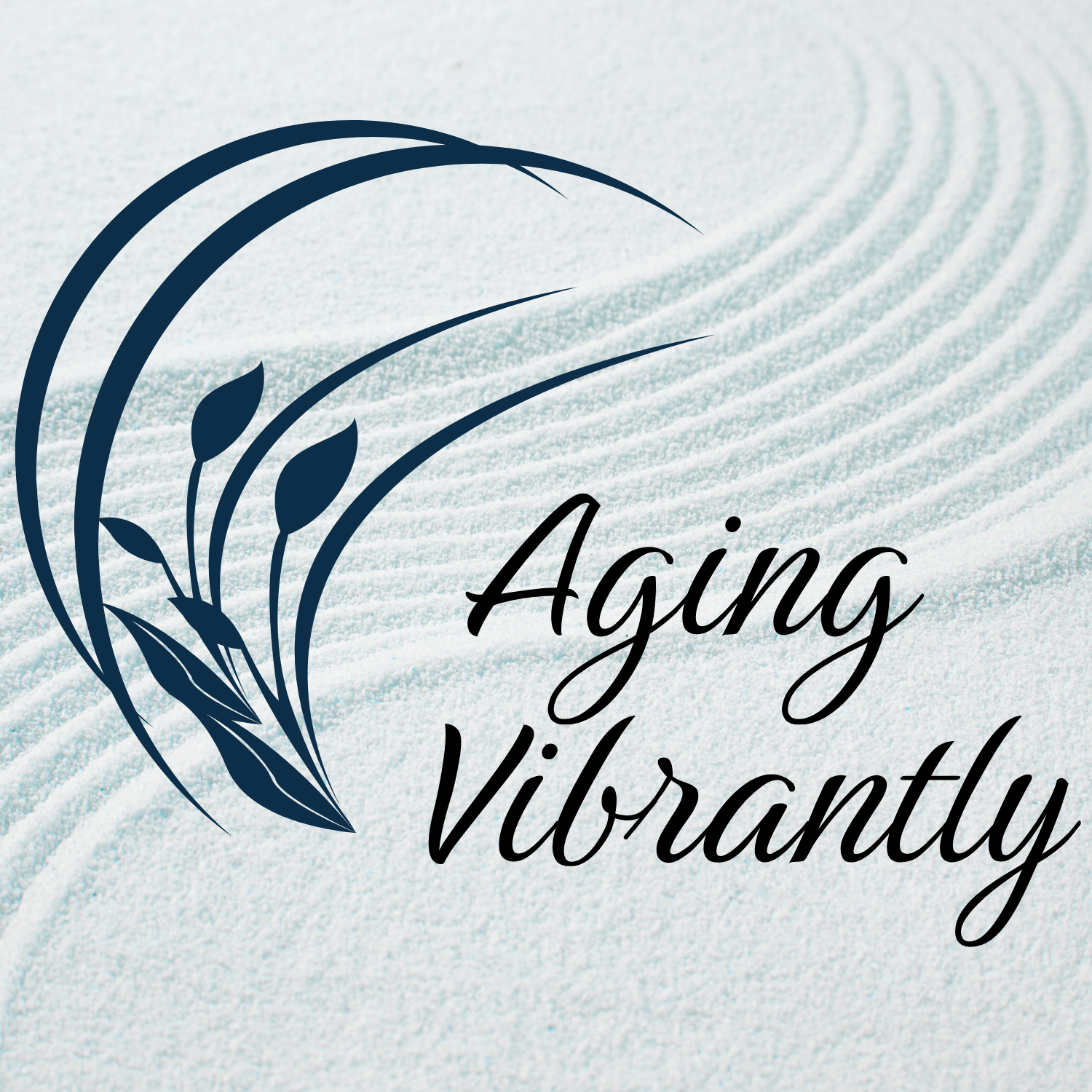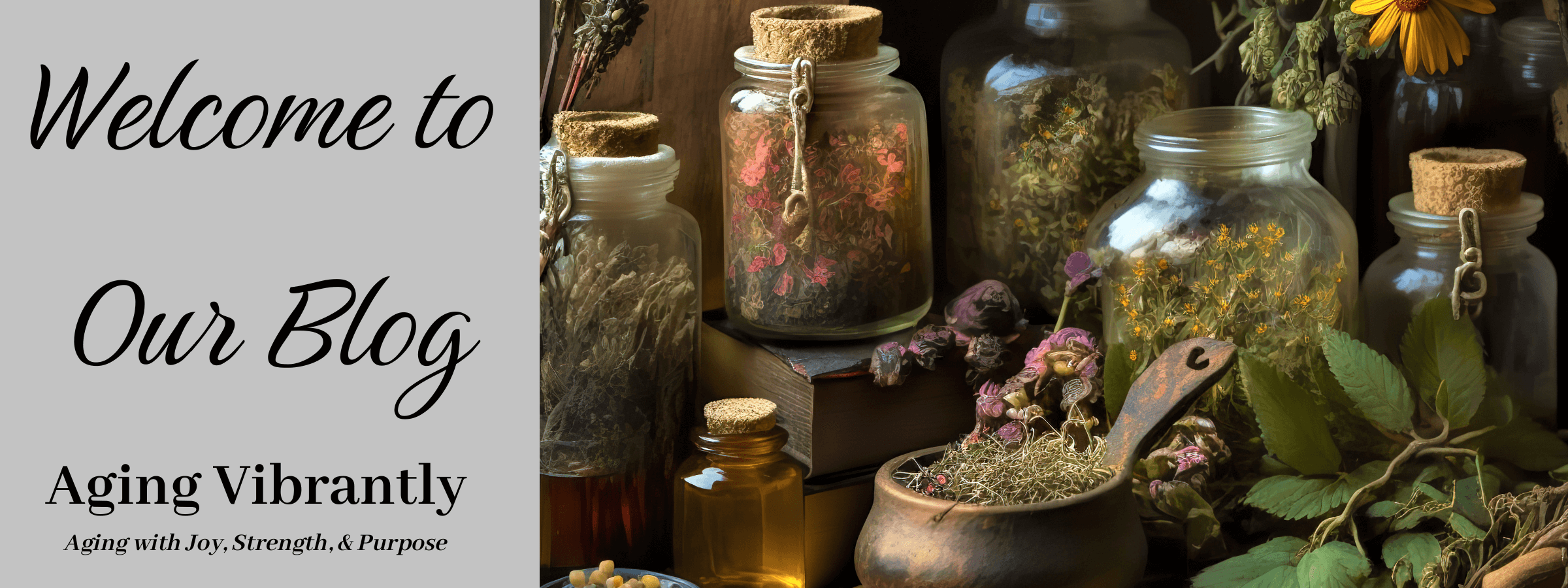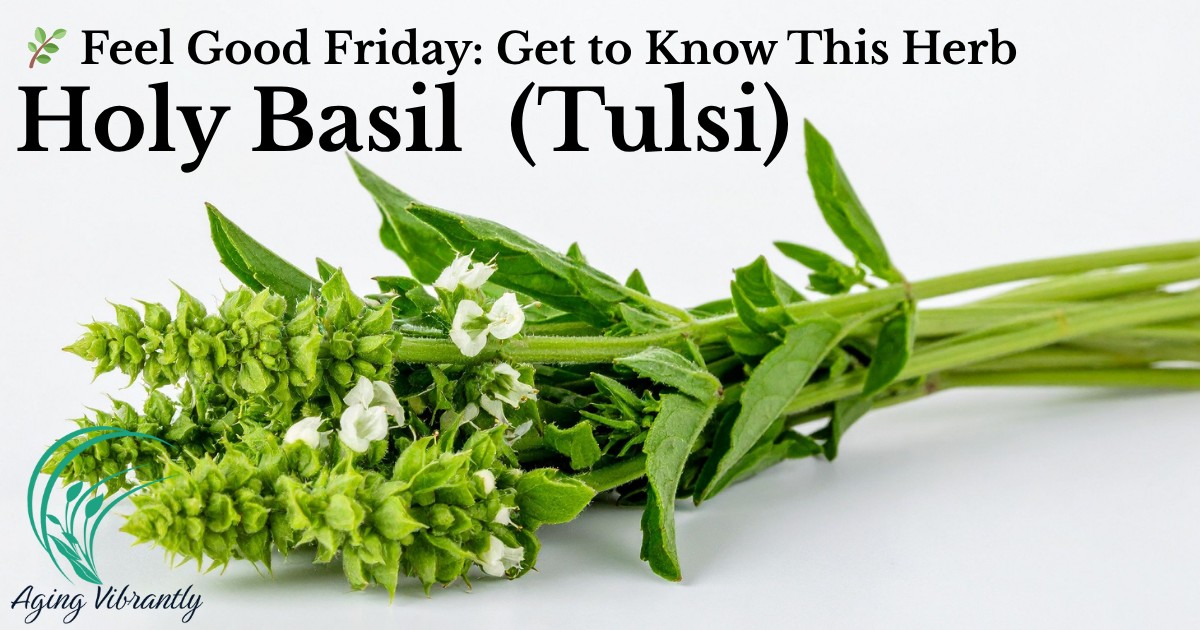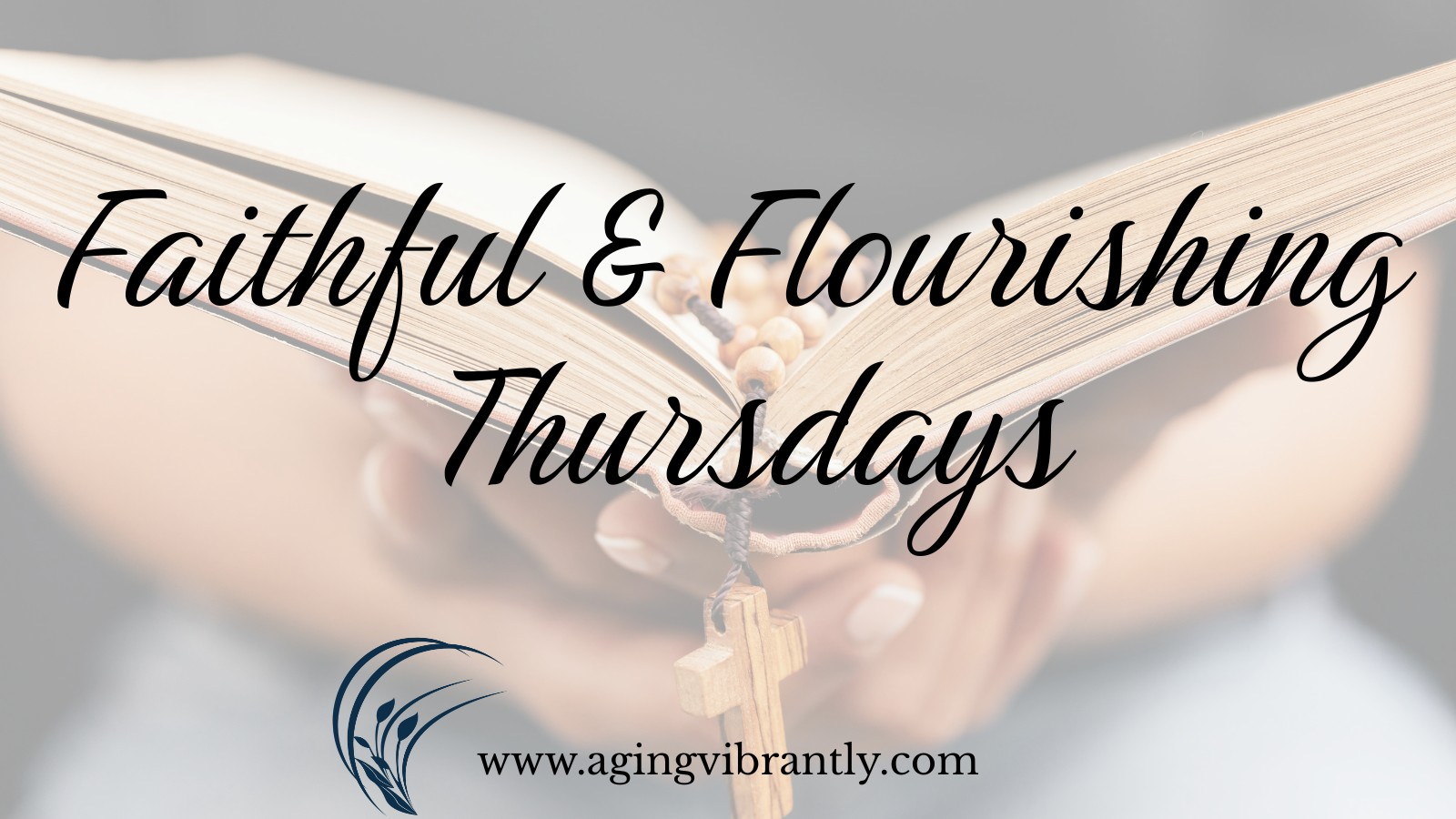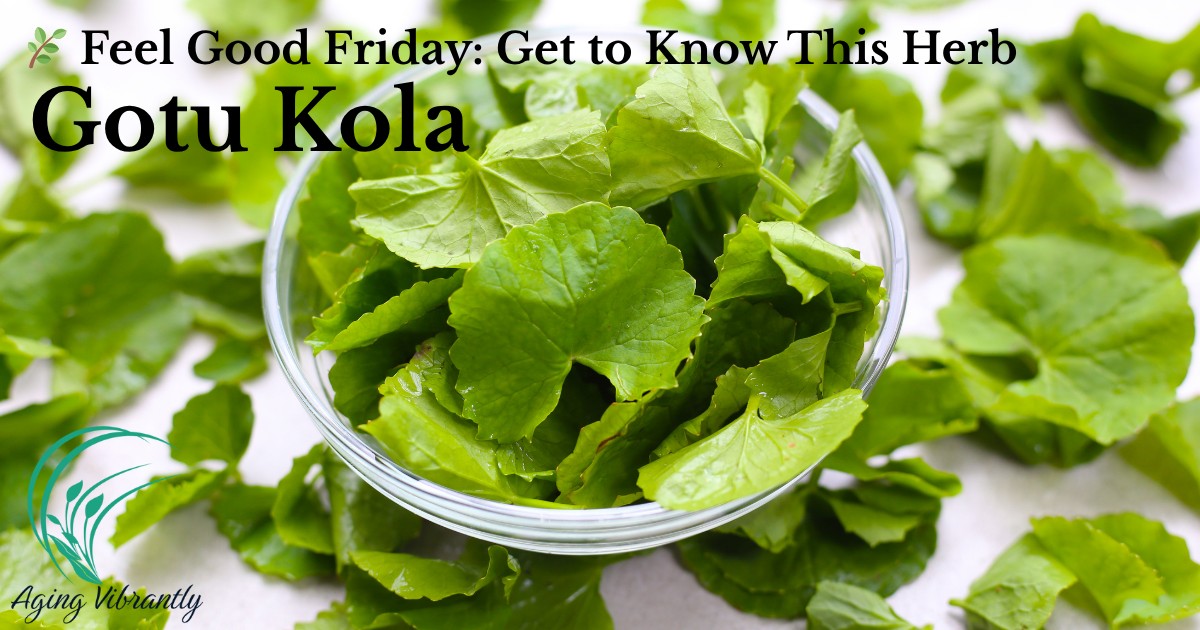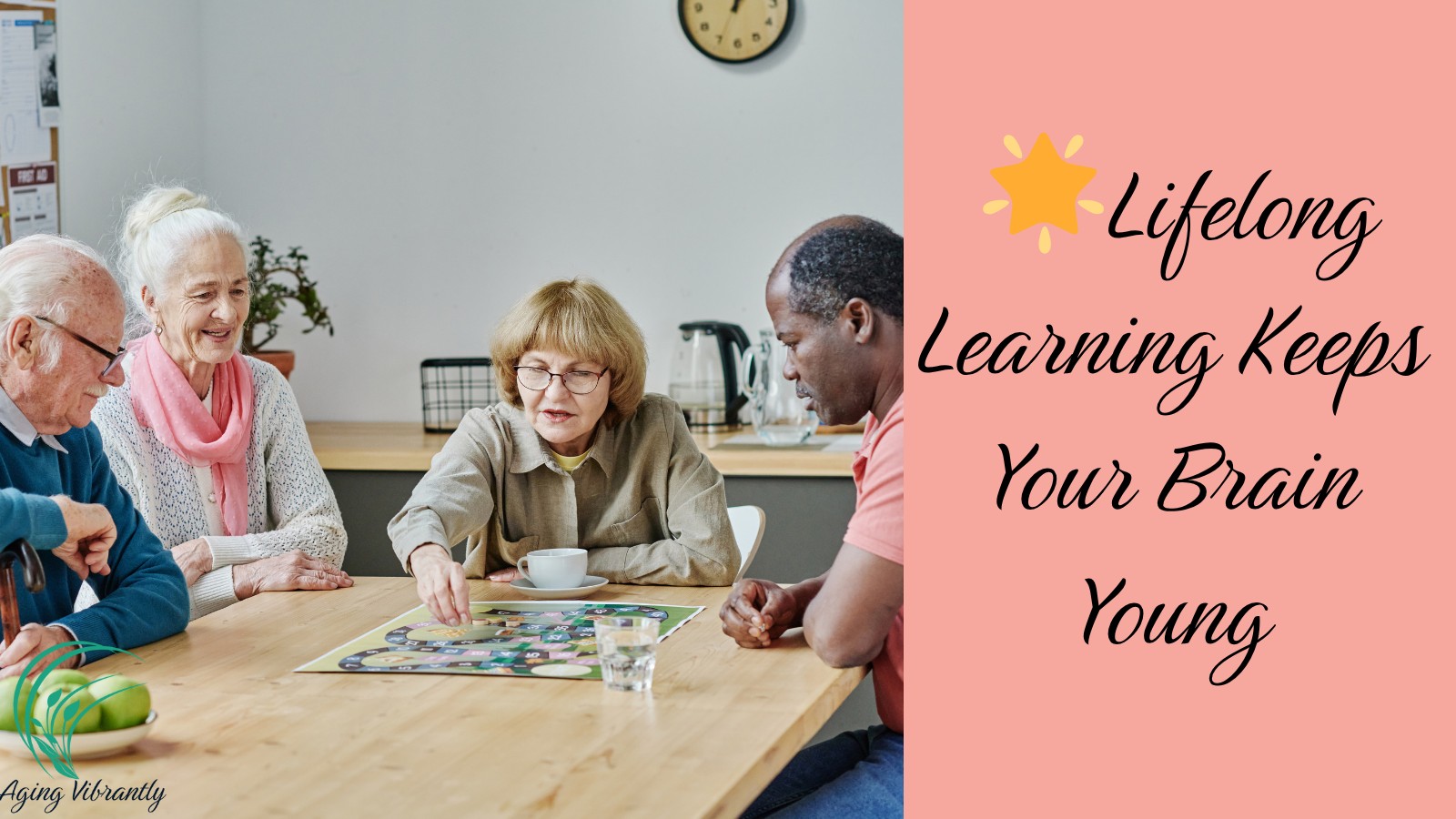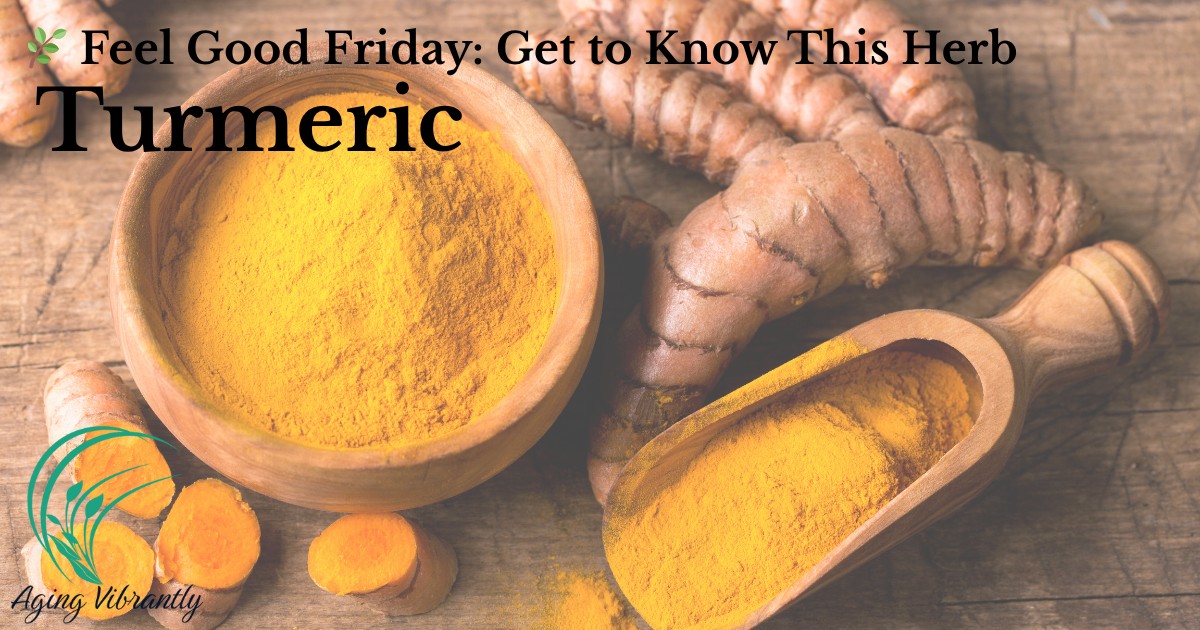
Botanical Name: Curcuma longa
Common Names: Turmeric, Indian saffron, Golden spice
Family: Zingiberaceae (Ginger family)
Plant Type: Perennial herb with rhizomes (underground stems) used as the spice
Common Names: Turmeric, Indian saffron, Golden spice
Family: Zingiberaceae (Ginger family)
Plant Type: Perennial herb with rhizomes (underground stems) used as the spice
🌞 A Golden Root for Vibrant Aging
Turmeric has been treasured for thousands of years, not just for its warm, golden color but for its incredible health benefits. Native to India and Southeast Asia, this powerful root has long been a staple in Ayurvedic and traditional Chinese medicine — and it’s still earning praise today for supporting whole-person wellness as we age.
💪 Wellness Benefits
| Area of Wellness | How Turmeric Helps |
|---|---|
| Inflammation & Joint Health | Curcumin, the active compound, helps reduce inflammation that contributes to joint stiffness and arthritis pain. |
| Brain Function | Supports cognitive health by increasing brain-derived neurotrophic factor (BDNF), which promotes healthy brain cells and memory. |
| Heart Health | May help lower cholesterol and improve circulation by reducing oxidative stress. |
| Digestive Support | Aids in breaking down fats and soothing the gut lining. |
| Immune Support | Acts as a natural antioxidant, protecting the body from free radical damage. |
🌼 Traditional Wisdom
In Ayurvedic tradition, turmeric is known as a “cleanser of the body and mind.” It’s often mixed with warm milk (known as Golden Milk) to promote relaxation, reduce inflammation, and support restful sleep. Many cultures use it in rituals of healing and renewal — a reminder that nature often provides what our bodies most need.
☕ Recipe: Soothing Golden Milk
Ingredients (serves 1):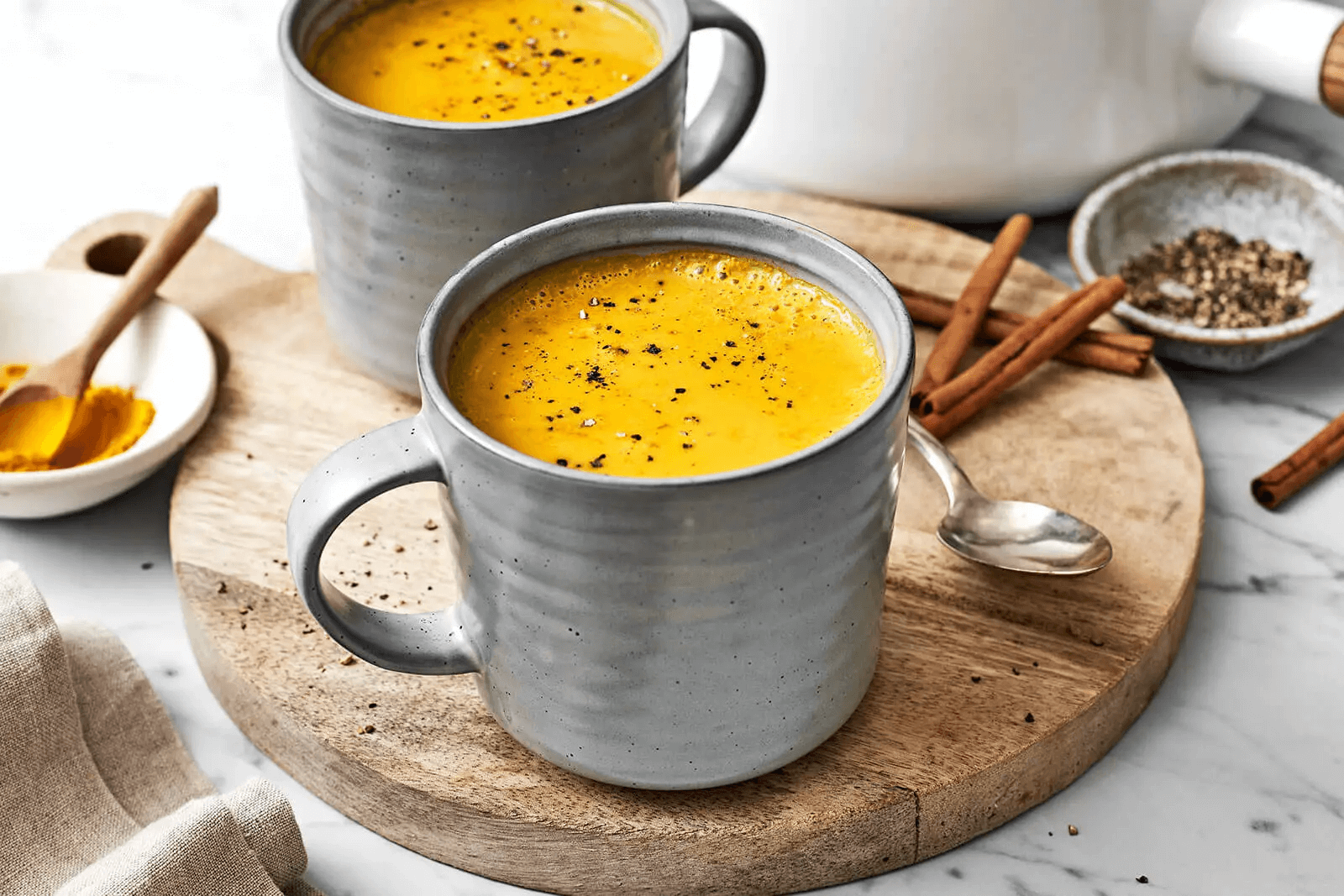

- 1 cup unsweetened almond milk (or any milk of choice)
- 1 teaspoon turmeric powder (or 1-inch piece fresh turmeric root, grated)
- ¼ teaspoon cinnamon
- A pinch of black pepper (enhances absorption of curcumin)
- ½ teaspoon raw honey or maple syrup (optional)
- Small pinch of ground ginger or ½ teaspoon fresh grated ginger (optional)
Directions:
- Warm the milk in a small saucepan over medium heat — do not boil.
- Whisk in turmeric, cinnamon, black pepper, and ginger until smooth.
- Simmer for 3–5 minutes, stirring occasionally.
- Remove from heat, stir in honey or sweetener if desired.
- Pour into your favorite mug, take a deep breath, and sip slowly.
🕯️ Enjoy before bed for a peaceful night’s sleep or mid-afternoon for a calming reset.
🙏 Aging Vibrantly Tip
Turmeric reminds us that healing begins from within. By adding small, daily doses of this golden spice to your routine, you’re supporting your body’s natural resilience — one bright cup at a time.
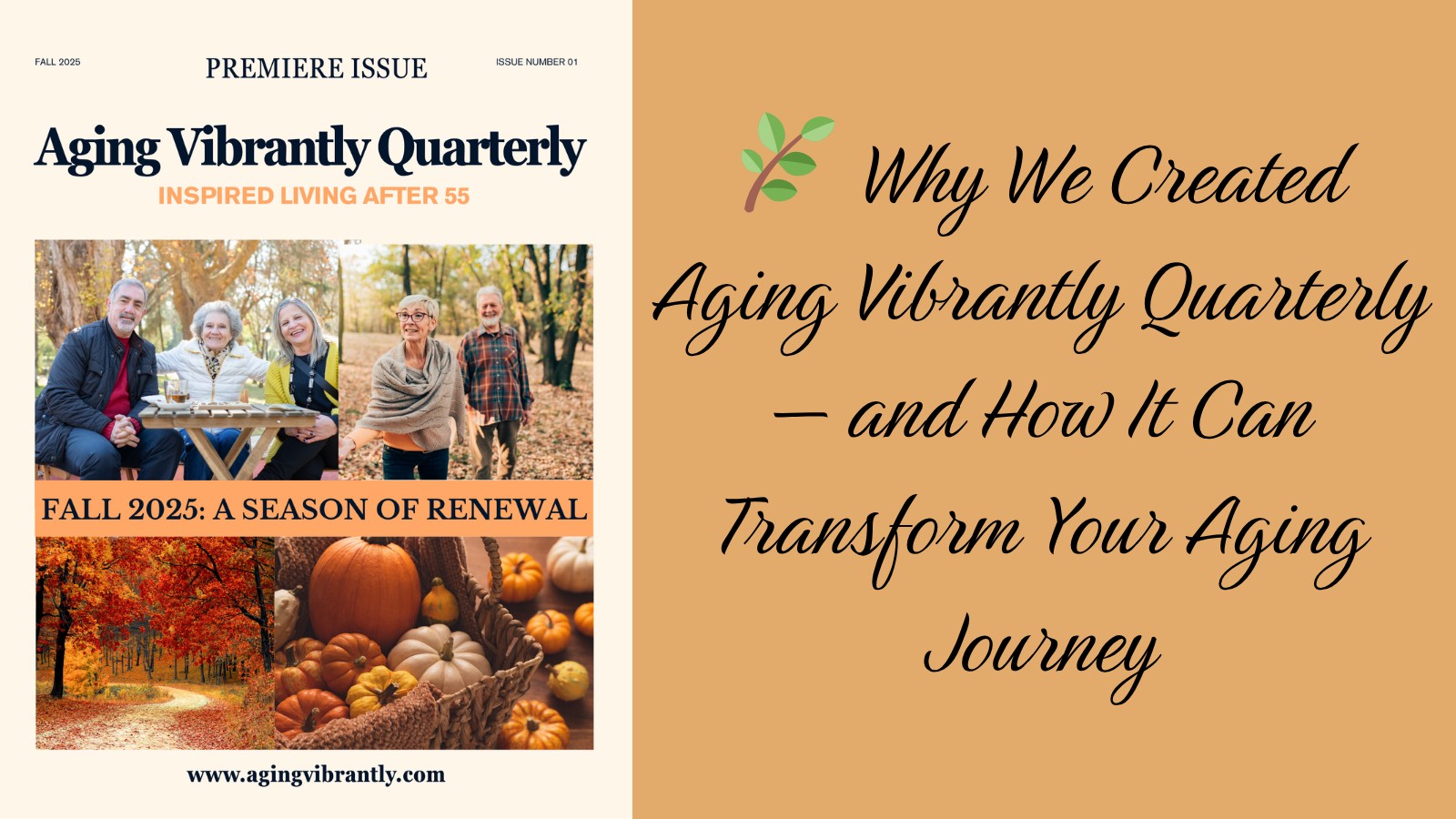
Discover the heart behind Aging Vibrantly Quarterly — a faith-based publication designed to help adults 55+ thrive through holistic wellness, purpose, and spiritual growth. Download your free issue today and start aging vibrantly!
Read more...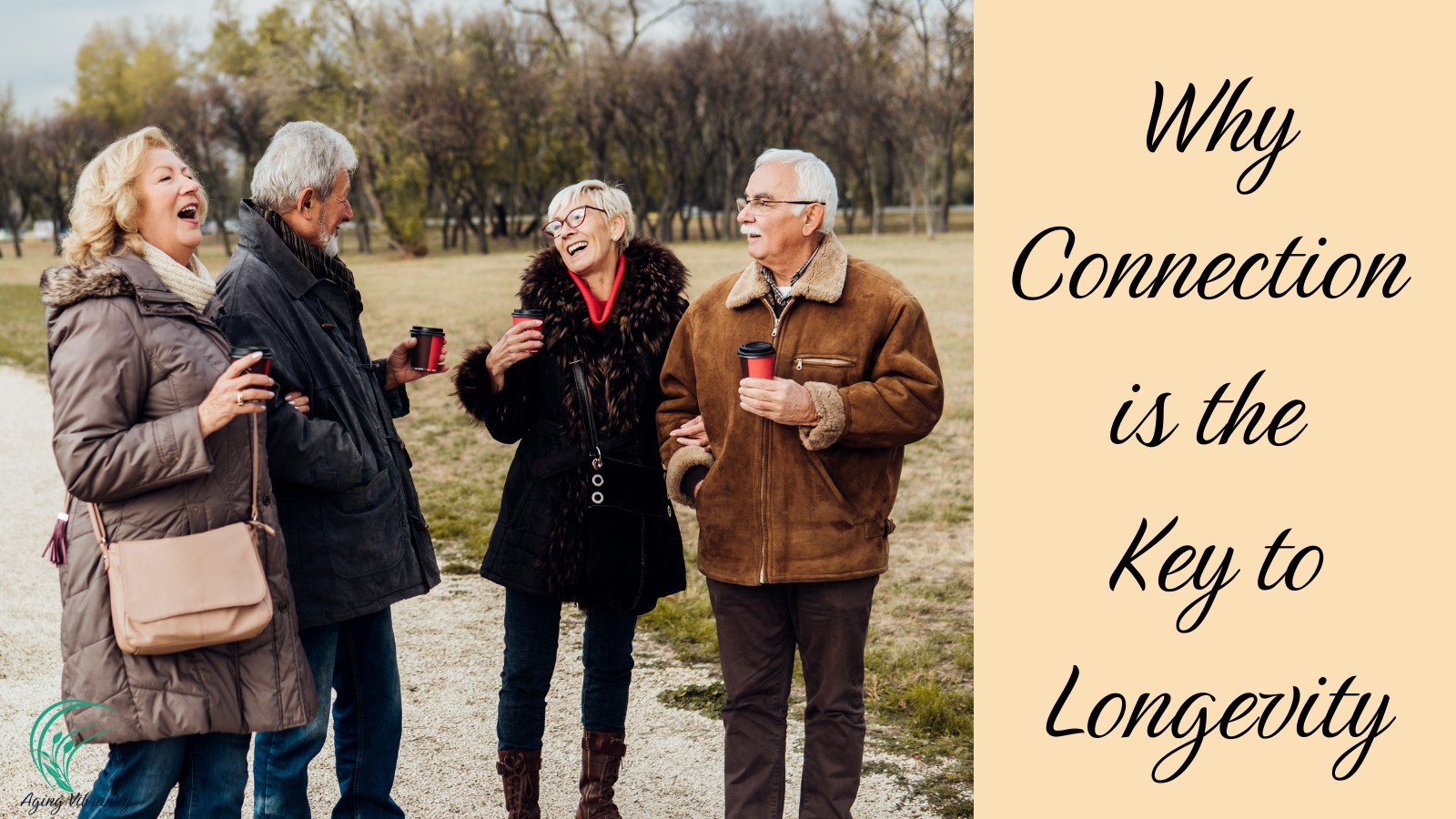
The Hidden Key to a Long, Vibrant Life
When most people think about living longer, they focus on diet, exercise, or genetics. But science shows that one of the most powerful predictors of a long and healthy life isn’t found in a pill or a treadmill—it’s found in relationships.
Human connection has a profound effect on our well-being. Studies reveal that people who maintain close social ties live longer, experience fewer health problems, and recover faster from illness. In other words, connection truly is the secret to longevity.
The Science Behind Connection and Longevity
Strong relationships aren’t just good for the heart emotionally—they’re good for the heart physically, too. Research from Harvard’s Study of Adult Development, one of the longest-running studies on human life, found that good relationships keep us happier and healthier. Those with strong social bonds lived longer and had better cognitive health as they aged.
Connection reduces stress hormones like cortisol, supports healthy blood pressure, and boosts immunity. Loneliness, on the other hand, has been linked to inflammation, heart disease, depression, and even early death.
In short: social isolation can be as harmful to your health as smoking 15 cigarettes a day.
How Connection Supports Every Aspect of Well-Being
- Physical Health – Spending time with loved ones encourages activity, laughter, and healthier habits. People who feel connected are more likely to take walks, eat well, and stay on track with medical care.
- Mental Health – Social interaction stimulates the brain, reducing the risk of cognitive decline and dementia. Engaging conversations, shared hobbies, and learning new things together keep the mind sharp.
- Emotional Health – Connection provides a sense of belonging and purpose. Feeling valued and supported can lower stress and improve mood.
- Spiritual Health – Community and faith connections remind us we are part of something larger than ourselves, offering peace and resilience through life’s challenges.
5 Ways to Strengthen Connection as You Age
- Reach Out Regularly – Schedule weekly calls or coffee dates with family and friends. Connection thrives with consistency.
- Join a Group or Class – From Bible studies to book clubs or walking groups, shared interests create lasting bonds.
- Volunteer – Giving your time builds purpose and introduces you to like-minded people who share your values.
- Embrace Technology – Tools like Zoom, FaceTime, or online communities such as Aging Vibrantly make it easier to stay in touch no matter where you live.
- Be Intentional – Connection doesn’t always happen by accident. Make small efforts—send a note, smile at a neighbor, check in with someone who lives alone.
The Aging Vibrantly Perspective
At Aging Vibrantly, we believe connection is a cornerstone of whole-person wellness. True longevity is not just about adding years to your life—it’s about adding life to your years.
Our community brings together people who want to age well—body, mind, and spirit—through meaningful connection, shared learning, and encouragement.
Our community brings together people who want to age well—body, mind, and spirit—through meaningful connection, shared learning, and encouragement.
Final Thoughts: Connection as Medicine for the Soul
Longevity isn’t just a matter of luck. It’s the result of living with purpose, nurturing relationships, and staying engaged. Every phone call, every smile, every shared moment strengthens your body, mind, and soul.
If you want to live longer and feel better—start by connecting more deeply today.
What is Next?:
Ready to build stronger connections and live more vibrantly? Subscribe to the Aging Vibrantly Quarterly and join our growing online community where we encourage, educate, and inspire each other to age well—together.
Please share the ways you are connecting out in the community in the comments!
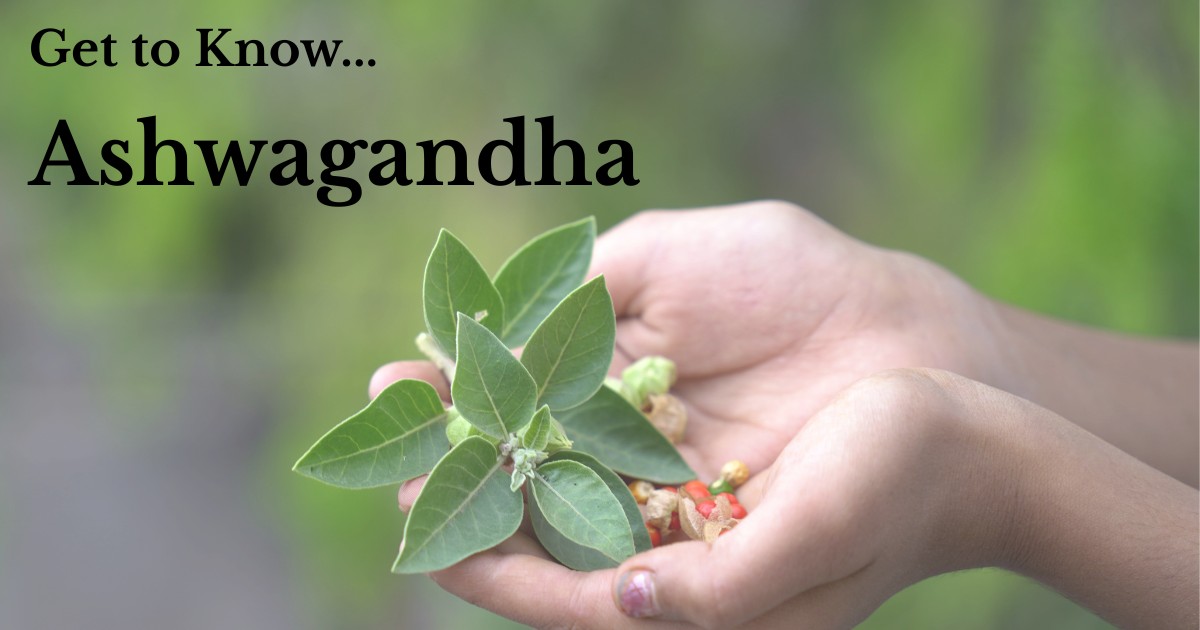
Welcome to our new Feel Good Friday series — a weekly spotlight on powerful herbs that help us age vibrantly and naturally! Each week, we’ll explore one healing plant, its unique benefits, and how it can support your whole-person wellness journey. 🌿
This week, we’re starting with one of nature’s most trusted stress-soothers — Ashwagandha, the calming adaptogen that helps restore balance, energy, and peace from the inside out. 💚
Disclaimer: The information shared in this series is for educational purposes only and is not intended to diagnose, treat, cure, or prevent any disease. Always consult with your healthcare provider before starting any new herbal supplement, especially if you are taking medications or have existing health conditions.
Ashwagandha (Withania somnifera) known as: Winter cherry, Indian ginseng
Family: Solanaceae
Parts used: Root
Native to: India and Africa
Family: Solanaceae
Parts used: Root
Native to: India and Africa
🌱 Botanical Snapshot
Ashwagandha is a small, perennial shrub that grows 2.5–5 feet tall, often thriving in dry, rocky soils and warm climates.
- Stem: Sturdy, with fine hairs that give it a slightly fuzzy appearance.
- Leaves: Simple, ovate, and arranged alternately along the stem—green with a velvety texture.
- Flowers: Small, greenish-yellow blooms that grow in clusters at the leaf axils.
- Fruit: Bright orange-red berries, smooth and enclosed in a papery calyx, similar in look to tiny ground cherries.
- Root: The most valued part—long, thick, and brown, with a strong, earthy odor. It contains key bioactive compounds such as withanolides and alkaloids that contribute to its adaptogenic and restorative effects.
Ashwagandha’s deep root system anchors it in arid soil and symbolizes its grounding nature—helping the body and mind find balance during stress.
🌍 Where It Grows
Native to India, Nepal, and parts of Africa and the Mediterranean. Organically cultivated sources are preferred due to sustainability concerns in parts of India.

🧪 Key Constituents
- Alkaloids (somniferine, withanine)
- Steroidal lactones (withanolides)
- Sitoindosides
- Iron
🌸 Traditional Background
Ashwagandha has been treasured for over 3,000 years in the Ayurvedic healing tradition of India, where it’s classified as a rasayana—a rejuvenating herb used to promote longevity, vitality, and resilience.
The Sanskrit name ashwagandha translates to “the smell of a horse,” symbolizing the strength, stamina, and vitality it is believed to impart. Ancient Ayurvedic texts describe it as a restorative for those who are exhausted, aging, or recovering from illness. It was commonly given to the weak, anxious, or overworked to restore balance between body, mind, and spirit.
Ashwagandha’s Latin name, Withania somnifera, means “sleep-inducing,” highlighting its unique combination of calming and energizing qualities. It nourishes the nervous system and adrenals, helping the body adapt to physical and emotional stress without causing overstimulation—a rare trait among adaptogens.
In traditional practice, it’s often blended with warm milk, honey, or ghee to enhance absorption and nourish the body deeply. This bedtime tonic was seen as a symbol of comfort and restoration, helping people wind down and rebuild from the day’s demands.
Ayurvedic healers also use ashwagandha to support reproductive vitality, enhance mental clarity, and strengthen immunity, viewing it as one of the most balancing herbs in the Ayurvedic pharmacopeia—suitable for nearly everyone, from the frail and elderly to those under chronic stress.
💪 Key Benefits
| Area | Benefit |
|---|---|
| Stress & Anxiety | Calms the nervous system, reduces anxiety, promotes restful sleep |
| Energy & Vitality | Builds stamina and strength over time without overstimulation |
| Cognitive Support | Improves concentration, focus, and mental clarity |
| Hormonal Balance | Supports fertility and reproductive health in men and women |
| Immune Health | Enhances immune function and resilience |
| Blood Sugar & Cholesterol | Shown to help lower glucose, LDL, and VLDL levels |
| Thyroid Function | May support underactive thyroid (use with caution in hyperthyroidism) |
💤 Unique Trait
Unlike many adaptogens, ashwagandha is both calming and restorative—ideal for stress-related fatigue, anxiety, and poor sleep.
⚠️ Cautions*
- Avoid during hyperthyroidism or while taking thyroid medications.
- Use under guidance during pregnancy.
- Not for those with iron overload conditions (like hemochromatosis).
☕ How to Use*
Traditionally taken as a powdered root mixed into warm milk (often with honey) before bedtime.
Typical Ayurvedic dose: 5 grams twice daily.
Typical Ayurvedic dose: 5 grams twice daily.
Try This at Home
Calming Ashwagandha Latte
- 1 cup warm almond or oat milk
- ½ tsp Ashwagandha powder
- ¼ tsp turmeric
- Pinch cinnamon
- 1 tsp honey (optional)
Whisk together and enjoy before bedtime.
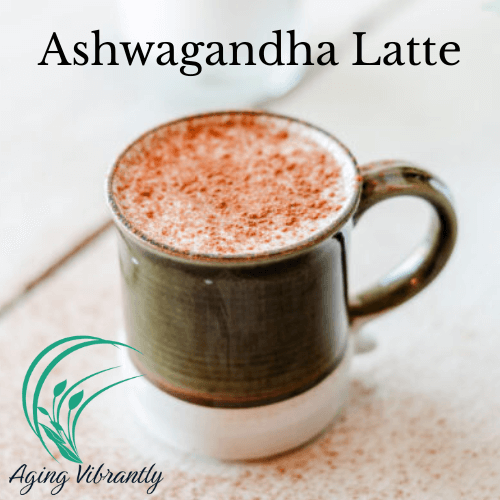
Closing Thought
Adding Ashwagandha to your wellness routine may help you stay calm, focused, and energized through life’s transitions. Remember—herbal wellness is a journey, not a quick fix. Start slowly, listen to your body, and celebrate the small steps toward vibrant aging.
*Aging Vibrantly provides educational, inspirational, and faith-based wellness content for older adults and caregivers. Our services are not a substitute for professional medical, legal, financial, or counseling advice.
💚 Want to Learn More?
Join us every "Feel Good Friday" and get to know another to benefit you as you Age Vibrantly!
Join us every "Feel Good Friday" and get to know another to benefit you as you Age Vibrantly!
Subscribe to Aging Vibrantly Quarterly for more about Holistic Wellness as You Age.
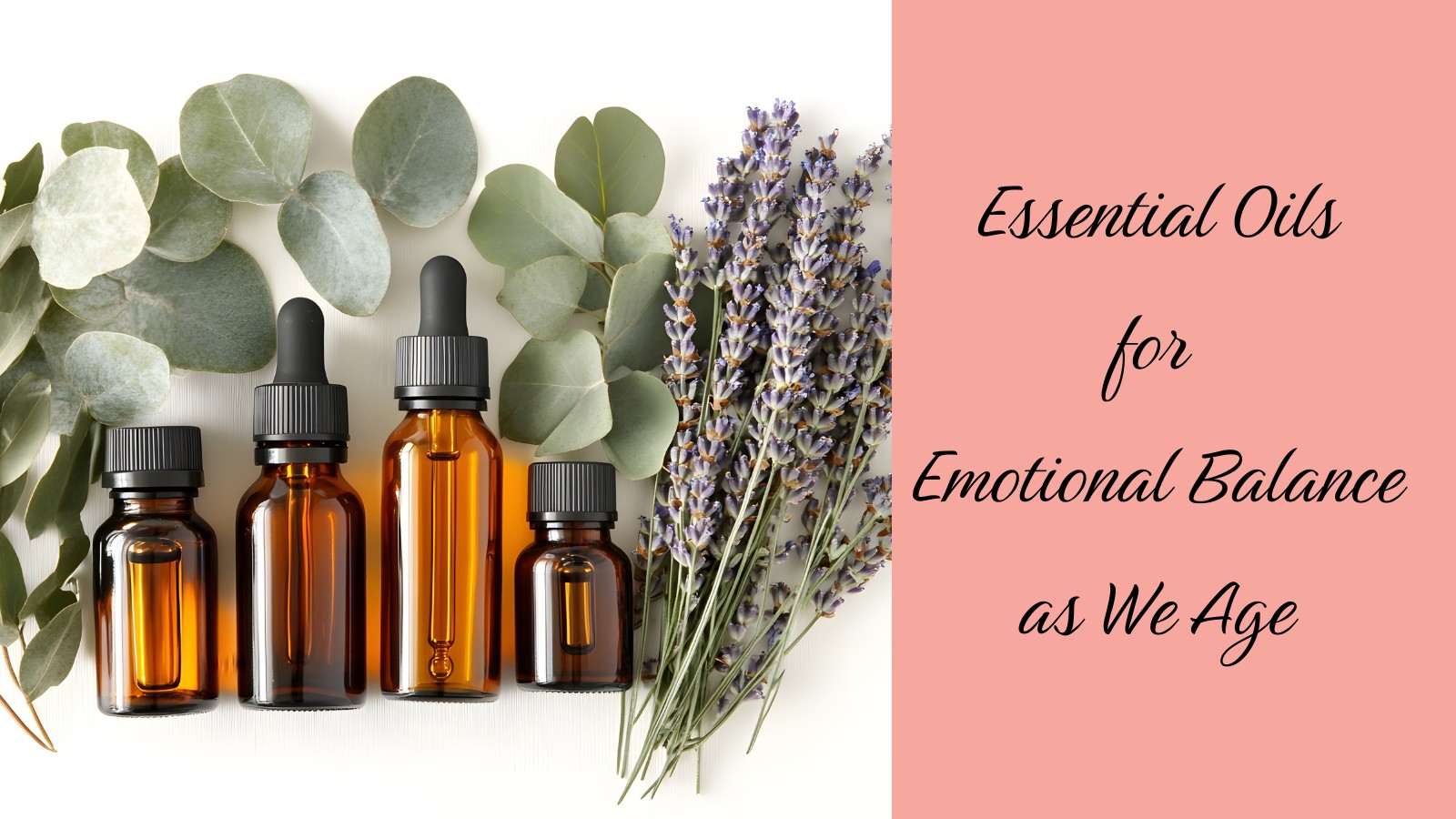
Aging is a season of growth and reflection — but also one of emotional shifts. We may experience new kinds of stress, loneliness, or anxiety as our lives and roles change. The beautiful truth is that creation provides natural tools to help us navigate these transitions. Essential oils are one of them — simple, powerful, and rooted in both science and Scripture.
🌸 Why Emotional Balance Matters as We Age*
As we age, our emotional health becomes just as important as our physical well-being. Many older adults experience changes that can stir up new emotions — retirement, loss of loved ones, physical changes, or shifting social circles. These transitions can sometimes lead to stress, anxiety, or sadness. Maintaining emotional balance as we age helps us stay resilient, connected, and hopeful through each new season of life.
🌿 The Mind-Body Connection
Emotions have a powerful impact on the body. When we experience ongoing stress or worry, our brains release cortisol and other stress hormones. Over time, high cortisol levels can lead to inflammation, poor sleep, high blood pressure, and even memory problems. Chronic stress can also weaken the immune system, making us more vulnerable to illness.
On the other hand, when we feel calm, joyful, and at peace, the body responds positively. Our heart rate slows, digestion improves, and immune function strengthens. Studies show that people who manage stress well tend to have lower rates of chronic disease and experience a better quality of life as they age.
💧 Emotional Wellness and Whole-Person Aging
Emotional balance is one of the key pillars of holistic aging. It supports the whole person — body, mind, and spirit. When we feel emotionally steady, we’re better able to make healthy choices, nurture relationships, and stay active in faith and community.
That’s why nurturing emotional health isn’t a luxury — it’s essential for vibrant living. Using natural tools like essential oils can make this easier. These aromatic plant compounds work with the brain’s emotional center to help ease tension, lift mood, and promote peace.
🕊️ A Faith-Based Perspective
God designed us as beautifully integrated beings. Our minds, bodies, and spirits are deeply connected. When one part is out of balance, the others feel the strain. Taking time to care for your emotional wellness honors that divine design. Practices like prayer, gratitude, community, and aromatherapy can work together to restore peace and purpose as we grow older.
🌞 Aging Vibrantly, Inside and Out
Aging vibrantly means living with joy, calm, and clarity — no matter your age. By caring for emotional balance through faith, connection, and natural wellness practices, we can thrive, not just survive, in our later years.
How Essential Oils Work on the Body and Mind
Essential oils aren’t just pleasant scents — they contain hundreds of natural compounds that interact with our brains and bodies. Here’s how they support emotional wellness:
1. Through the Limbic System (Your Emotional Brain)
When you inhale an essential oil, its molecules travel through the nose to the olfactory bulb, which connects directly to the limbic system — the part of your brain that regulates emotion, memory, and motivation.
- Lavender and bergamot, for example, influence neurotransmitters like serotonin and dopamine, which help stabilize mood.
- This fast, direct connection is why certain aromas can instantly calm your nerves or trigger joyful memories.
2. By Supporting the Nervous System
Essential oils contain terpenes and esters, natural compounds known to have relaxing effects on the nervous system.
- Linalool (found in lavender) and linalyl acetate (found in bergamot) have been shown to lower heart rate and blood pressure in stressful situations.
- Oils like frankincense can reduce cortisol levels, helping the body move from “fight or flight” into a state of rest and restoration.
3. By Balancing Hormones Naturally
As we age, hormonal changes can influence emotional stability. Certain essential oils help the body rebalance naturally:
- Clary sage may support estrogen balance, easing irritability and mood swings.
- Ylang ylang can promote calm and reduce stress-induced tension.
4. By Encouraging Mindful, Faith-Based Practices
Using essential oils intentionally — during prayer, meditation, or deep breathing — encourages mindfulness. This slows racing thoughts, centers your focus on God, and helps you remain present. Over time, these small rituals strengthen emotional resilience.
Top Essential Oils for Emotional Balance
| Essential Oil | Key Benefit | Best Use |
|---|---|---|
| Lavender | Calms anxiety, promotes rest | Diffuse before bed or add to a bath |
| Bergamot | Lifts mood, eases tension | Inhale during moments of stress |
| Frankincense | Grounds the mind, supports spiritual focus | Use in prayer or meditation |
| Ylang Ylang | Soothes frustration and tension | Apply (diluted) to wrists or neck |
| Rose | Comforts sadness, promotes love and compassion | Diffuse during quiet reflection |
| Clary Sage | Balances hormones, reduces irritability | Blend with carrier oil and apply topically |
Each of these oils are available here. Please understand that this a link to an affiliate and may result in a small income for Aging Vibrantly. Your cost is not affected in any way.
How to Use Essential Oils Safely and Effectively
- Inhale: Add 4–6 drops to a diffuser or place a drop on a tissue and breathe deeply.
- Topical: Mix 2–3 drops with a carrier oil (like jojoba or fractionated coconut oil) before applying to skin.
- Bath or Massage: Combine 3 drops of oil with Epsom salts or carrier oil for soothing relaxation.
- Faith Time: Diffuse frankincense or rose during devotion, journaling, or prayer for emotional grounding.
Always use pure, therapeutic-grade oils, and check with your healthcare provider if you take medications.
The Faith and Creation Connection
Essential oils are part of God’s intricate design — the aromatic essence that protects plants and blesses us with healing properties. When we use them with gratitude and intention, we participate in that divine rhythm of restoration. Each breath reminds us: peace and healing are gifts available to us daily.
Final Thoughts
Essential oils offer a remarkable bridge between body, mind, and spirit. They work with the brain’s emotional center, calm the nervous system, and create sacred moments of stillness. Whether you’re diffusing lavender to relax, inhaling bergamot to lift your mood, or praying with frankincense, these natural tools invite balance and joy into the aging journey.
Because aging vibrantly means caring for every part of who we are — body, mind, and soul.
Find out more about Emotional Resilience HERE
Please leave your Comments below about how Essential Oils have benefited you!
*All statements in this article are meant for educational purposes, not medical. Please consult your medical doctor before undertaking any suggestions in this article.
